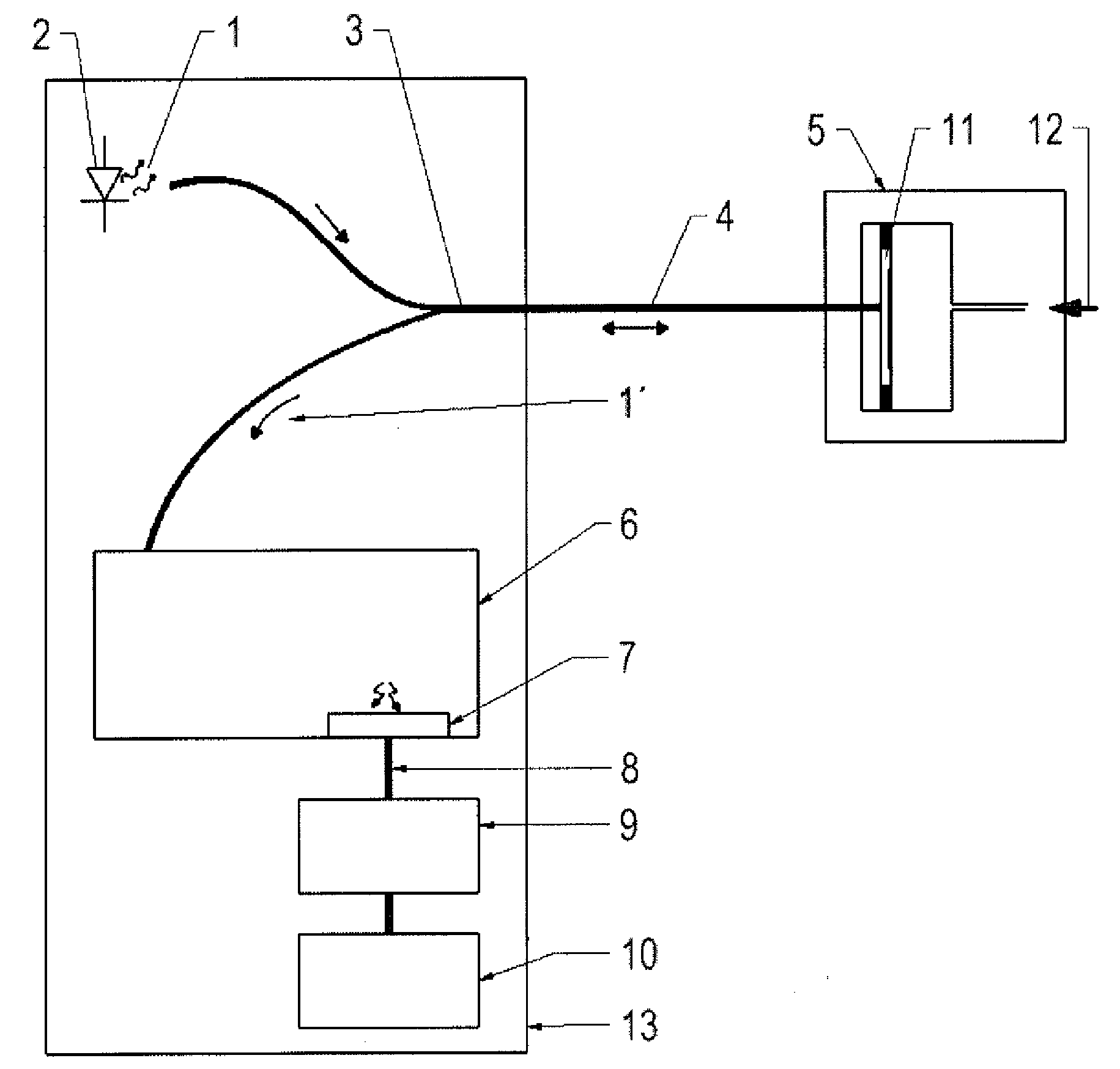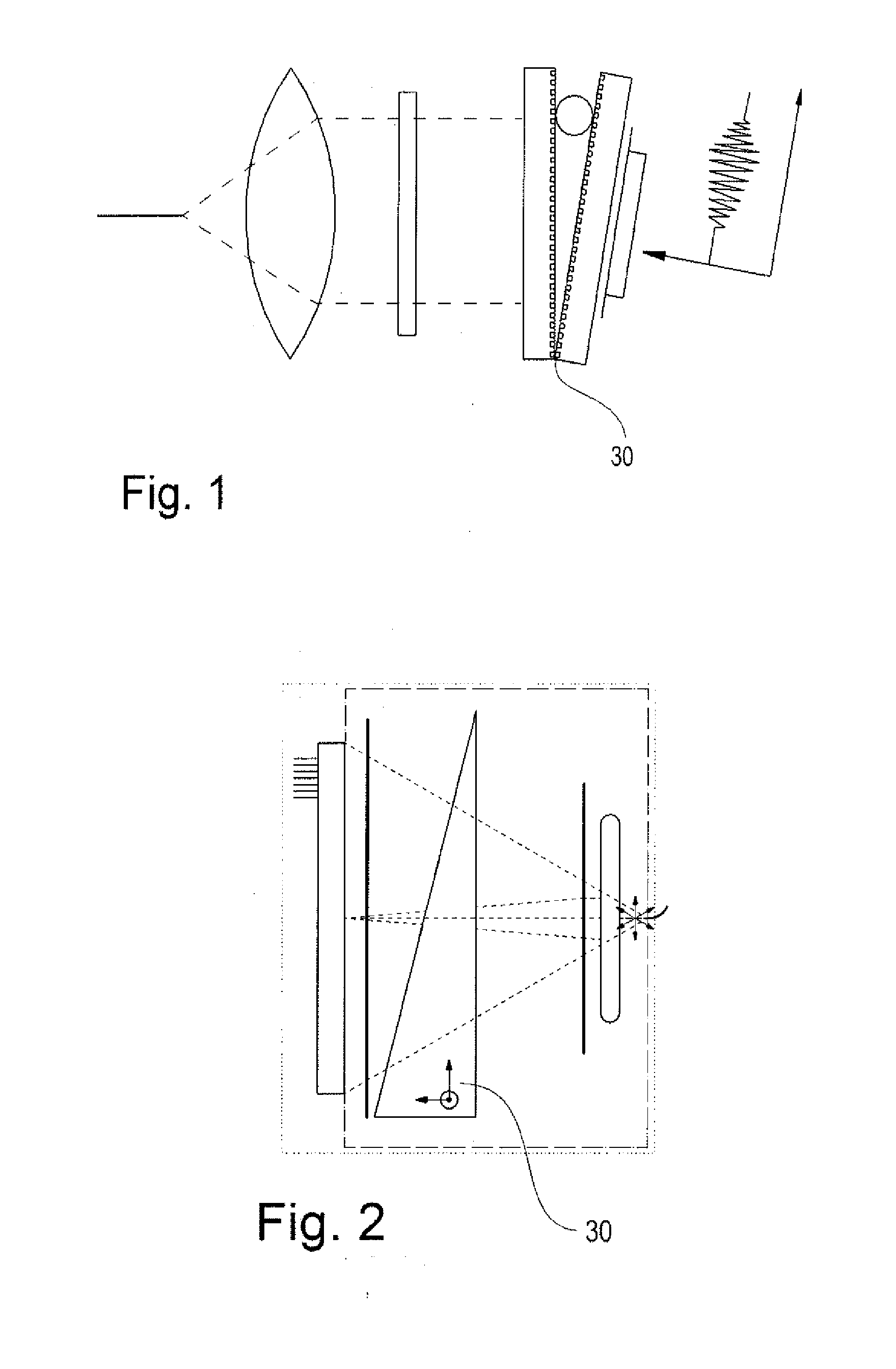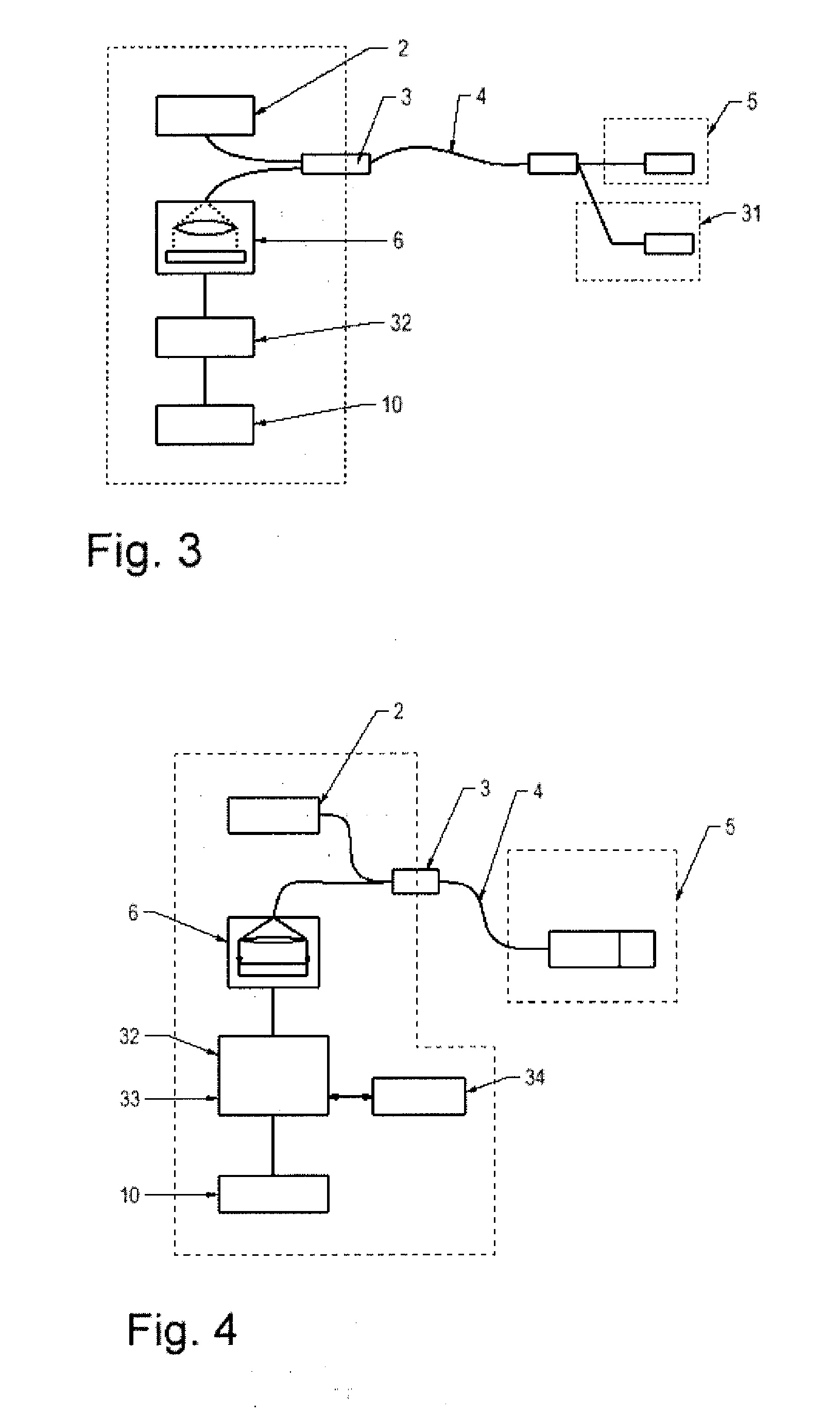Method for Evaluating A Measured Parameter
a measurement parameter and measurement method technology, applied in the field of measurement parameter evaluation, can solve the problems of reducing the attainable measurement accuracy, and disadvantageous effect on the attainable accuracy, so as to achieve high simplification of the entire signal processing and achieve more accurate results, the effect of high vacuum pressure acquisition
- Summary
- Abstract
- Description
- Claims
- Application Information
AI Technical Summary
Benefits of technology
Problems solved by technology
Method used
Image
Examples
Embodiment Construction
[0040]FIGS. 1 to 4 depict schematically known measuring systems based on optical interference principles, which systems have already been described in the introduction.
[0041]FIG. 5 depicts a typical structure of a preferred diaphragm-based Fabry-Perot measuring system. The system is comprised of an evaluation unit 13 and a sensor 5 which are connected by means of optical waveguide 4 with the evaluation unit 13. Light 1 from a white light source 2 is conducted via a coupler 3 and optical waveguide 4 to the measuring sensor 5 developed as a Fabry-Perot sensor 5 with a cavity 11, and is modulated in such a cavity as a function of the parameter to be measured. The modulated light is conducted via the same optical waveguide 4 and coupler 3 to an optical spectrometer 6. This spectrometer 6 generates an output signal, the spectrometer signal 8, by measuring overall m0 intensity values sλ(λm) at the different wavelengths λm. Each value sλ(λm) corresponds to the measured intensity at the wav...
PUM
 Login to View More
Login to View More Abstract
Description
Claims
Application Information
 Login to View More
Login to View More - R&D
- Intellectual Property
- Life Sciences
- Materials
- Tech Scout
- Unparalleled Data Quality
- Higher Quality Content
- 60% Fewer Hallucinations
Browse by: Latest US Patents, China's latest patents, Technical Efficacy Thesaurus, Application Domain, Technology Topic, Popular Technical Reports.
© 2025 PatSnap. All rights reserved.Legal|Privacy policy|Modern Slavery Act Transparency Statement|Sitemap|About US| Contact US: help@patsnap.com



